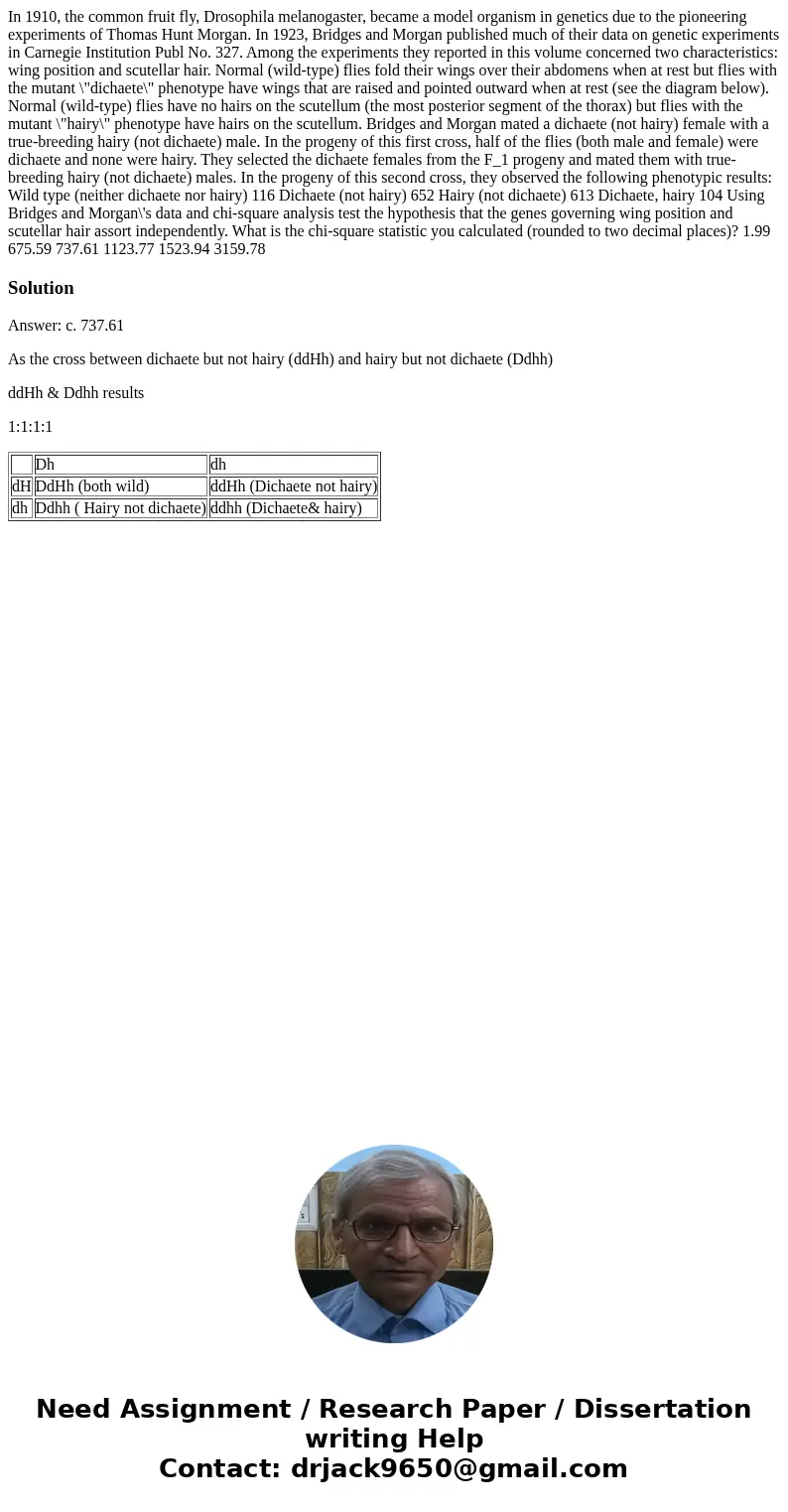In 1910 the common fruit fly Drosophila melanogaster became
In 1910, the common fruit fly, Drosophila melanogaster, became a model organism in genetics due to the pioneering experiments of Thomas Hunt Morgan. In 1923, Bridges and Morgan published much of their data on genetic experiments in Carnegie Institution Publ No. 327. Among the experiments they reported in this volume concerned two characteristics: wing position and scutellar hair. Normal (wild-type) flies fold their wings over their abdomens when at rest but flies with the mutant \"dichaete\" phenotype have wings that are raised and pointed outward when at rest (see the diagram below). Normal (wild-type) flies have no hairs on the scutellum (the most posterior segment of the thorax) but flies with the mutant \"hairy\" phenotype have hairs on the scutellum. Bridges and Morgan mated a dichaete (not hairy) female with a true-breeding hairy (not dichaete) male. In the progeny of this first cross, half of the flies (both male and female) were dichaete and none were hairy. They selected the dichaete females from the F_1 progeny and mated them with true-breeding hairy (not dichaete) males. In the progeny of this second cross, they observed the following phenotypic results: Wild type (neither dichaete nor hairy) 116 Dichaete (not hairy) 652 Hairy (not dichaete) 613 Dichaete, hairy 104 Using Bridges and Morgan\'s data and chi-square analysis test the hypothesis that the genes governing wing position and scutellar hair assort independently. What is the chi-square statistic you calculated (rounded to two decimal places)? 1.99 675.59 737.61 1123.77 1523.94 3159.78

Solution
Answer: c. 737.61
As the cross between dichaete but not hairy (ddHh) and hairy but not dichaete (Ddhh)
ddHh & Ddhh results
1:1:1:1
| Dh | dh | |
| dH | DdHh (both wild) | ddHh (Dichaete not hairy) |
| dh | Ddhh ( Hairy not dichaete) | ddhh (Dichaete& hairy) |

 Homework Sourse
Homework Sourse